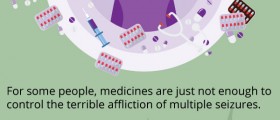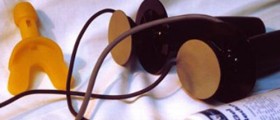
Patterns of epilepsy
The experts have discovered the most usual patterns of catamenial epilepsy. The seizures are mostly seen in the premenstrual period, at the time of ovulation and throughout the second half of the menstrual period.The aggravation of epilepsy seizures at the time of menstruation almost always happen in women who experience normal periods. Those who do not have normal menstrual cycles are in danger of the seizures becoming worse during the second half of the period. The second half is also known as luteal phase. The experts have a lot of problems to recognize the pattern of the seizures that occur during the luteal phase as the aggravation is not so much focused as it is prolonged. Women affected by this problem experience anovulatory cycles and because of that no corpus luteum is being formed at the time of the second half of the period and therefore no secretion of progesterone will occur.
The experts believe that catamenial seizure aggravation occurs due to an underlying problem. The problem is believed to be the hormonal fluctuations in estrogen and progesterone that occurred due to menstrual cycles. The role of estrogens is to ease the epilepsy seizures while the progesterone is effective in keeping the system safe from the seizures.Epilepsy effects on life
After suffering from an epilepsy seizure for the first time a person will ask him or herself how will that influence will that disease have his or her life. After a while, a person will wonder whether his or her state became better after the last change of treatment. A lot of doctors advise epilepsy patients to write down their feelings on a questionnaire. This is supposed to help the patients to discover just how much epilepsy and the seizures affect their life. Apart from getting the questionnaires from the doctor, the patients can get them from several certified web sites. Even though the questionnaires are copyrighted, they can be downloaded. A person should contact the web site and find out how to use them. When downloading these questionnaires from the internet, a person should choose one of the quality of life questionnaires or QOLIE and the SSQ or seizure severity questionnaire. The questionnaires should be completed right after being downloaded and again several months later or after making some changes in treatment. The questionnaires will show a patient just how much some things have changed, if at all. This information should be passed on to the doctor and by discussing about them the doctor should be able to make necessary changes that will improve the treatment.A certain questionnaire named the Quality of Life in Epilepsy-31 or the QOLIE-31 is supposed to discover how exactly epilepsy affects the life of those aged over 18 years of age who are diagnosed with epilepsy. Patients aged between 11 and 17 years of age should fill out the QOLIE-AD-48, which is specially made for adolescent patients. No one but the person who suffers from epilepsy should complete the survey as no one knows exactly how the patient feels. Both of these questionnaires contain 31 questions that are related to the health and the everyday activities. In case a person is unsure how to answer some question, he or she should do their best to answer it and then comment on it or explain it on the side of the page. These notes should be helpful especially when the patient goes to the hospital to discuss about the way epilepsy affects his or her life with the doctor.
The experts have come up with a newer and improved version of questionnaire for the adults. This new version is called the QOLIE-31-P. The main difference between this one and the original one is that the new questionnaire contains 38 questions, unlike the 31 in the original survey. The new questions are related to the amount of stress the patient experiences because of the problems and the worries that occur due to suffering from epilepsy. The Quality of Life in Epilepsy for adolescents questionnaire named QOLIE-AD-48 does not contain 31 questions but 48. These questions are divided into two parts and are about the health of the patient and the problems he or she might have performing the normal daily activities due to the disease. The questions are answered not by writing them down but circling one of the already given answers. The second set of questions is not only about the effects of epilepsy but also about the antiepileptic medications.
















Your thoughts on this
Loading...